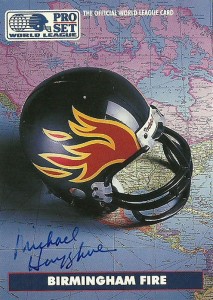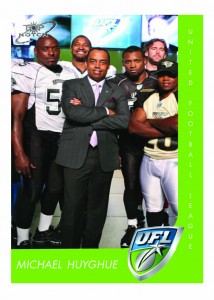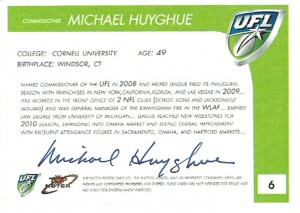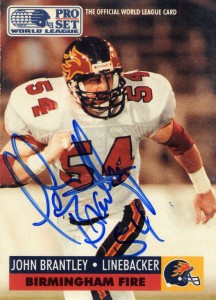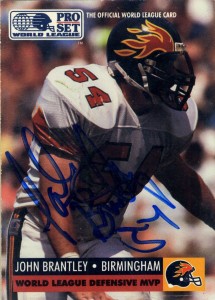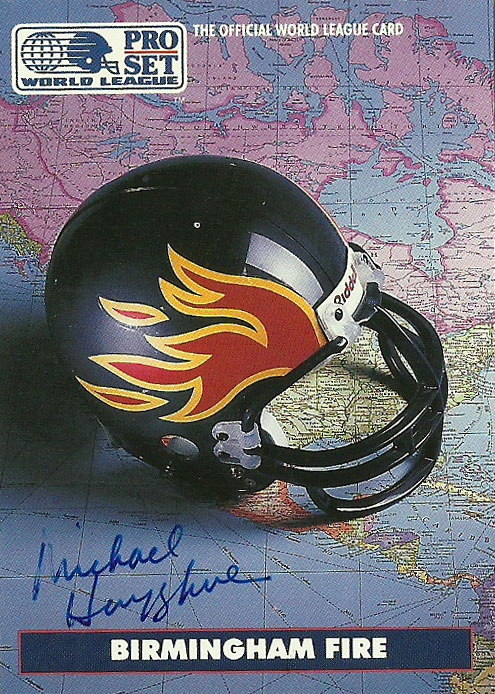
Coach: Chan Gailey
Stadium: Legion Field
Record: 5-5 (1991), 7-2-1 (1992)
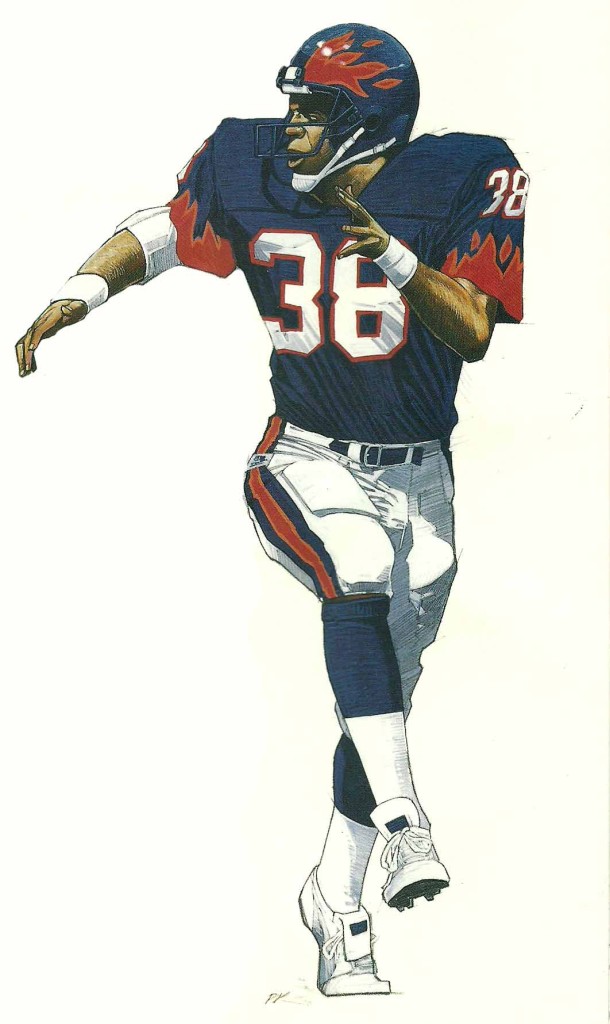
BACKGROUND:
Gavin Maloof- a former Houston Rockets executive- desperately wanted a WLAF franchise. He went so far as to getting into a bidding war with a competing syndicate over the rights to San Antonio. Losing the bid to Larry Benson, commissioner Mike Lynn offered Maloof the Birmingham market instead. Jumping at the opportunity, the Birmingham Fire would be established, playing at Legion Field.
The Fire name was a slam-dunk and everybody in the front office and the league office really liked it. The flames on the sleeves and on the helmet was a spur of the moment revelation by designer Dave Boss on the way to work one day. – It also was well received.
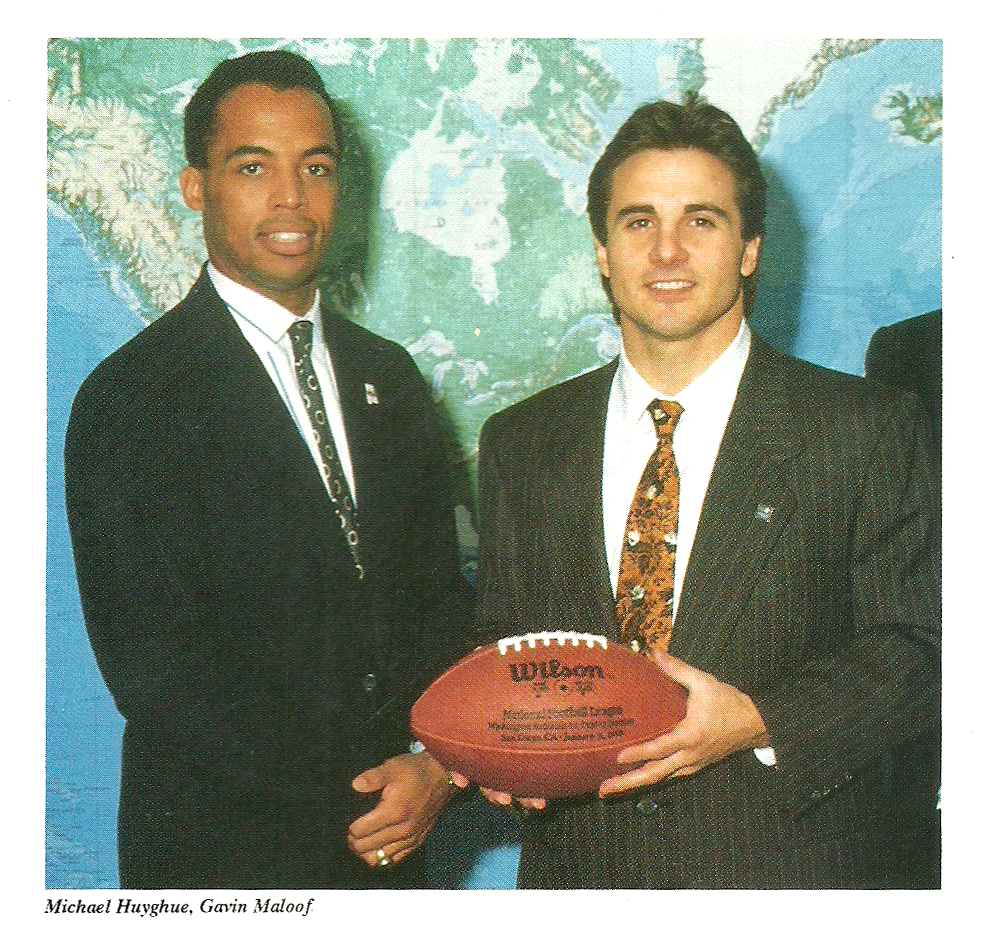
Maloof hired future UFL commissioner Michael Huyghue as General Manager along with Denver Bronco offensive mastermind Chan Gailey.
The Fire strongly resembled the San Antonio Riders in style of offensive play. While the offense was more turnover prone than their Texas counterparts, the Fire’s defense was typically lights out.

1991:
The team could never seem to nail down quarterback, although former NFL scab Brent Pease took the majority of the snaps over scrambler and Vandy star Eric Jones in 1991. At runningback, former Bronco Kenny Bell led the team in receptions, while punishing fullback Steve Avery handled all the dirty work. Elroy Harris joined the team mid-season after beating the team as a member of the Montreal Machine and by the end of the season, led the team in rushing. Wide receiver would be long range threat Willie Bouyer‘s department, while Mark Hopkins and Phil Ross provided a nice 1-2 punch at tight end.
The Fire ran a very mean 3-4 defense. Outstanding linebackers John Brantley and Paul McGowan worked with underrated Maurice Oliver. The back four sported ball hawks James Henry and John Holland at cornerback and John Miller and Arthur Hunter at safety. They’d combine to form one of the best secondaries in the league. Among punters Kirk Maggio had one of the top net averages in the league.
At the end of the season the Fire had 5 members make 1st or 2nd All-World League- none of which would be on offense. Brantley and Miller would grab first team honors, while Darrell Phillips (NT), Holland, and Maggio earned 2nd team honors. McGowan earned All-World Defensive MVP honors at the end of the season.
I watched the Fire’s first game in the WLAF on TV against the Montreal Machine. An impressive 52,000+ showed up at Legion Field in Birmingham, boosting the league’s hopes for the season. USA Network broadcasted the game, -a yawner of a defensive affair, that the Machine would win 20-5 over the Fire. It was a nice offensive showdown between Kenny Bell and Elroy Harris.
Attendance varied wildly throughout the season in Birmingham with a low of only 8,000 showing up against the Riders, in a sad defensive affair, as the Fire ground out a 16-12 win. I remember the last few plays of the game, (as in the WLAF kneeling to run out the clock was prohibited), Brent Pease kept scrambling to keep the Riders on their toes.
The Fire finished 5-5, -good enough for first in their division over the 4-6 Riders and 2-8 Surge. After the season the Fire hosted the Barcelona Dragons during the first ever WLAF playoff game in North America. A bit over 37,000 showed up for the game, with Eric Jones in at quarterback for the Fire, but the team fell 10-3 to Jack Bicknell‘s Barcelona Dragons.
1992-
In 1992 the Fire made some changes on offense and the front office, while keeping the majority of their defense intact. Brent Pease was sent packing to the Knights. In came Shawn Moore (allocated from the Broncos) and Mike Norseth. Kenny Bell was gone and Jim Bell from Barcelona was in. Along the offensive line the Fire grabbed the KC Chiefs’ Joe Valerio. Eddie Britton was paired on the other side from Bouyer to take pressure off of him. In the front office Michael Huyghue moved on to work in the league’s executive offices while Rich Nichols stepped in.
During the off-season the team also flirted with disgruntled NFL runningback Mike Rozier about joining the Fire- but little if anything came of the rumors. (The team just couldn’t afford the price tag.) In the meantime, -pretty much the whole defense returned intact.
The Birmingham Fire started their 1992 season just as slowly as 1991. If the Fire felt that the Riders and Surge were hard enough to handle in 1991, they had an even more difficult problem with them in 1992, dropping their opener 20-6 to Sacramento and squeaking out a 17-10 victory over San Antonio in week 2. A tie with the London Monarchs in week 4 would be decisive in the contentious division rankings between the 3 teams, with Sacramento finishing 8-2, Birmingham 7-2-1 and SA at 7-3.
Norseth ended up taking nearly all the snaps at quarterback, throwing 4 touchdowns- to 12 picks. Elroy Harris and Jim Bell led the rushing attack, combining for 852 yards on the ground. Bouyer again was the defacto receiver on the team, hauling in 704 yards on 57 catches, but did not have a touchdown.
Defensively Oliver paced the team with 6 sacks, and John Miller had 3 picks. Both John Brantley and John Miller returned to the All-World teams.
The Fire played against the Orlando Thunder in the 1992 playoffs, where they’d be shellacked by the Thunder 45-7, -in the worst playoff loss in WLAF history.
With optimism riding high towards 1993- despite the questions over the league’s continuing existence- fans were hopeful that the Fire would make the jump along with the Riders and Surge to the CFL, but opted to fold instead when the WLAF reorganized.
NOTES:
Gavin Maloof sold the Fire back to the WLAF after the 1992 season. The WLAF contacted former Alabama QB and Packers legend Bart Starr to attempt to lure a new owner, but folded before anything really took shape.
After reorganizing the WLAF reused the Fire name in 1995 for their Rhein, Germany location. The logos and colors were also completely different.
From time to time the Kawasaki brand has borrowed the Birmingham Fire helmet logo for billboard advertisements.
Birmingham hoped to host World Bowl ’92, but were ultimately not selected as Montreal hosted the game.
The Birmingham Fire were the only North American WLAF team to make the playoffs in both seasons of the league’s history.
LEGACY:
It did not take long for the CFL to plant the Birmingham Barracudas in the city in 1995, but due in part to mismanagement of the original Shreveport franchise, the dominos fell and all the CFL USA teams were shuttered after the season.
In 2000, the Arena Football League 2 would put the Steeldogs in Birmingham and the city also re-emerged in 2001 as a member of the XFL, as the Birmingham Thunderbolts. Unfortunately both these franchises folded as well with the ‘Bolts after one season and the Steeldogs in 2008.
Hopes remained strong though that the United Football League would select the city as a possible landing spot- but the UFL folded before anything got serious.
Like San Antonio, Birmingham returned to the Spring football stage in the AAF as the Iron. Just like the Fire before them, the Iron’s bread and butter was a bend-not-break defense, and a punishing ground game. The Iron were arguably the second best team in the league at its dispersal after 8 games- and were one of only two teams to clench a playoff spot.
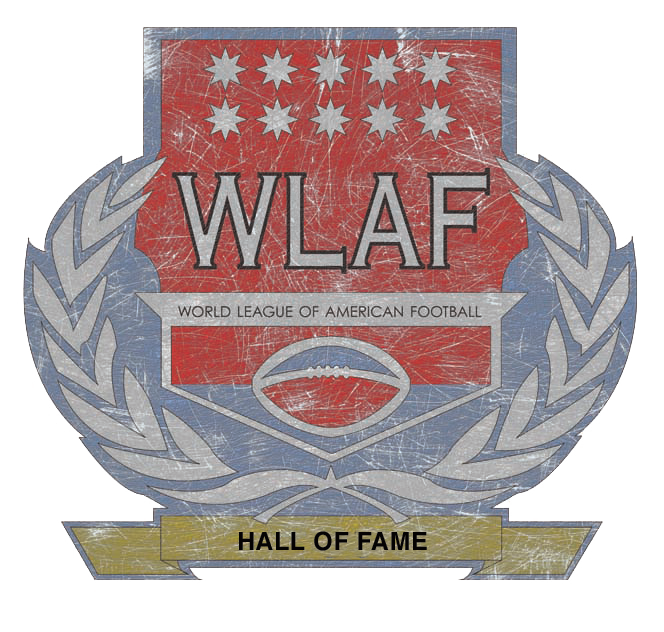
HC- Chan Gailey
Other Notables- Michael Huyghue
QB- Mike Norseth, Brent Pease, Eric Jones, Shawn Moore
RB- Elroy Harris, Steven Avery, Ken Bell
OL- Joe Valerio, Carl Bax
WR- Willie Bouyer, Eddie Britton
TE- Phil Ross, Mark Hopkins
DL- Darrell Phillips
LB- John Brantley, Paul McGowan, Maurice Oliver
DB- Arthur Hunter, John Holland, John Miller, James Henry
K- Philip Doyle
P- Kurt Maggio
At this time I am still missing autographs on these cards from:

Wild Card WLAF 1992-
John Holland
Arthur Hunter
Eugene Rowell
Willie Bouyer
Ultimate WLAF 1992-
Willie Bouyer Arthur Hunter
Kirk Maggio
